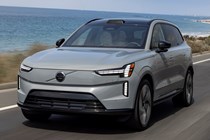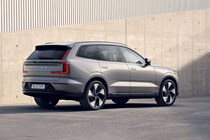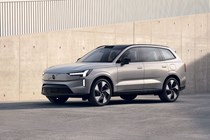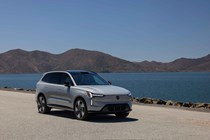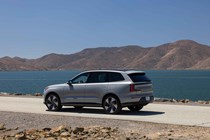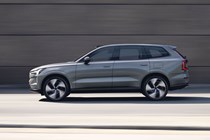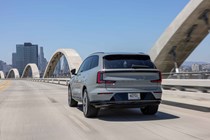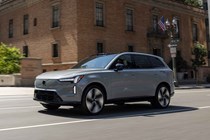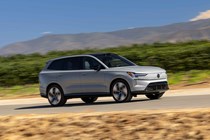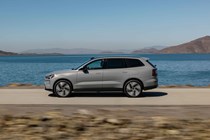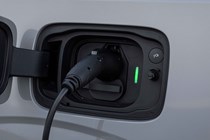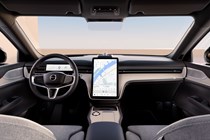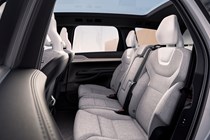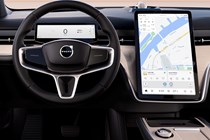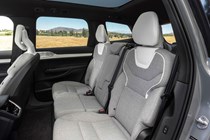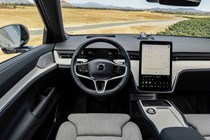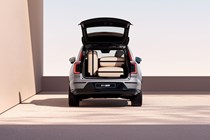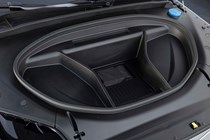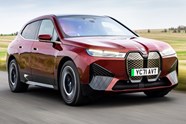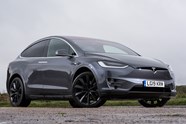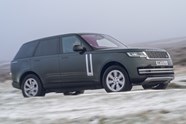
Volvo EX90 review

At a glance
| Price new | £96,255 - £100,555 |
|---|---|
| Used prices | £64,274 - £88,660 |
| Road tax cost | £0 |
| Insurance group | 50 |
Get an insurance quote with

|
|
| Fuel economy | 2.9 miles/kWh |
| Range | 360.4 - 363.5 miles |
| Miles per pound | 4.6 - 8.5 |
| View full specs for a specific version | |
Available fuel types
Fully electric
Pros & cons
- Comfortable ride
- Whisper quiet inside
- Plenty of interior room for seven
- Frightening price
- Annoying foibles with touch screen
- Poor efficiency on test
Volvo EX90 SUV rivals
Overview
Back in 2002, the Volvo XC90 transformed the family car landscape, doing to the school run what the Renault Espace had managed in the years before. The Swedish firm is now hoping that the EX90, an electric seven-seat SUV, will do the same by offering practical family transport in what is currently a small pool of rivals.
Competitors include the BMW iX, Mercedes EQS SUV, Tesla Model X and the upcoming pure-electric version of the Range Rover. Volvo is aiming for its EX90 to be just as luxurious as all these cars, but a little more family oriented. Not only is there seating for seven, but it’s also set to be Volvo’s safest car yet.
Scroll down to read the Parkers review on the new Volvo EX90. We’ll explore all aspects of the car, including its practicality, interior quality, technology, driving experience and running costs before offering our final verdict. If you’d like to learn more about how we reached our verdict on the EX90, check out our how we test cars explainer page.
What’s it like inside?
Largely brilliant. Build quality is excellent and the design is, as ever in recent Volvos, calming and with a tastefully expensive flourish. Our test car is dominated by the white wood finish and similarly coloured non-leather seats. Black non-leather is also available, as is a wool blend that looks great but itches if you’re wearing shorts. Volvo claims to have utilised 45kg of recycled plastics and bio materials across the car.
All seven seats fold easily – the middle ones by mechanical lever, the rear-most set electrically – and they drop flat into the floor, presumably a tricky engineering exercise given the skateboard-style battery underneath.
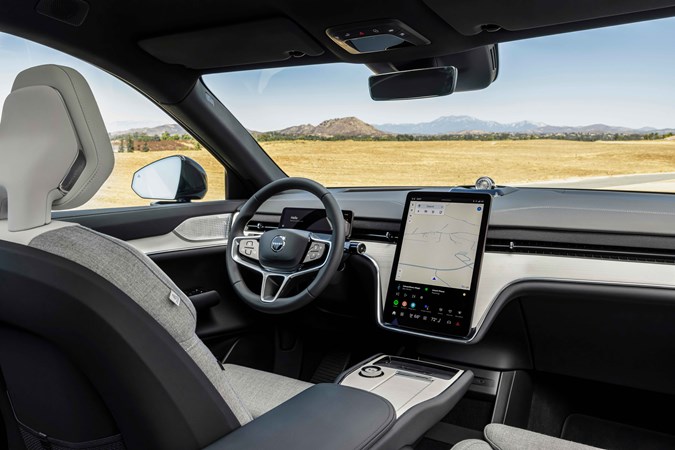
Thanks the efficiencies of EV packaging, there is loads of room in the middle row. You sit higher than the front seats so the visibility is excellent but even allowing for that raised perch, there is a vast amount of leg and headroom.
Access to the rear seats is easy, with just a flick of a lever and the seat canters and then slides forward. With the middle row in its rearmost position, knee room in the back is tight so you need to slide the middle row forward. But the car will swallow a family of six with ease.
Safety
All the safety kit on board is bang up to date. Volvo is still making gains with passive safety systems like the airbags and crash structures, constantly evolving the design as more is learnt about car crashes (it has access to data from 50,000 accidents to help on that front).
But active safety is also to the fore, with a new lidar sensor on the car’s roof (the taxi-esque lump that looks bizarre) that can detect objects up to 250m away to make sure the car’s systems react as they should do. For the time being, it’s only processing data but from next year it will be turned on to work with the car’s systems. Volvo prefers a combination of sensors and cameras, unlike Tesla which insists that the latter are up to the job. There’s also a two-sensor ‘driver understanding’ system.
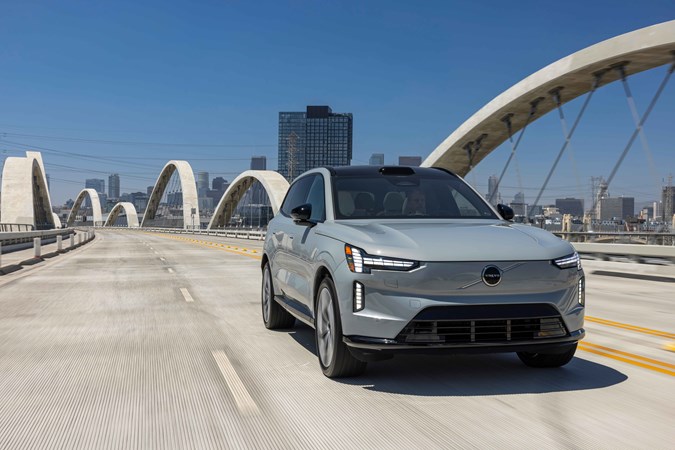
All a bit too much nanny state? Possibly, but we rarely found the system to trigger annoyingly. The EX90 certainly bonged a lot less than its rival systems (such as Kia’s).
Comfort
Comfort is the Volvo’s strongest asset. Not only are the seats supportive in all the right places – albeit not quite as armchair-like as Volvos of old – but the ride quality and refinement are both top drawer.
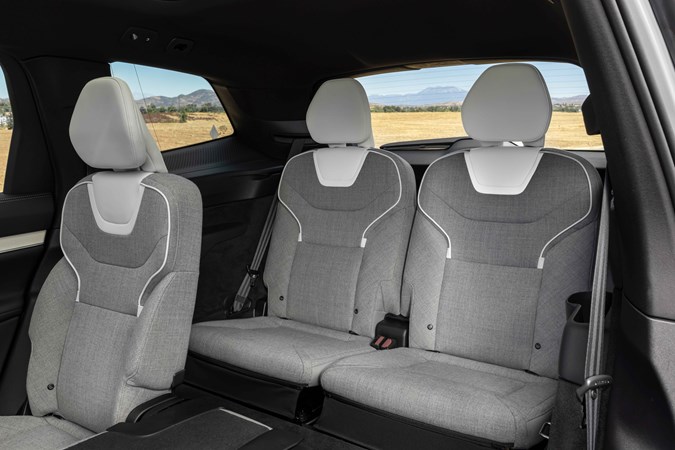
The car comes with twin-chamber air suspension as standard and it controls any lumps and bumps well, gliding across broken tarmac easily. The 22-inch wheels might present a problem in some instances, as they are so heavy that they have a big impact on unsprung mass, but for the most part the EX90 is a comfortable cruiser.
What’s it like to drive?
Largely as you’d expect: safely and conservatively. There are few hidden depths to the EX90 as it goes through a corner – it turns in well, with minimal feel, rolls into the apex and flows out again. Only a quick left/right flick unsettles it and even then it’s hardly earth-shattering.
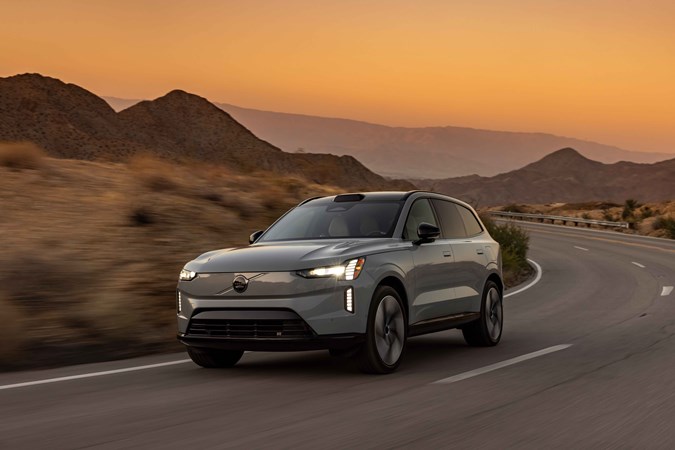
Even the speed isn’t as surprising as you’d think the figures would indicate – the 0-62mph time in the Twin Motor Performance is faster than a Honda Civic Type R. It’s quick but not outrageously so, putting on enough speed to be comfortable but without ever feeling like things could get out of control.
What models and trims are available?
For now, just two power levels are available – a Twin Motor (408hp, 770Nm) and Twin Motor Performance (508hp, 910Nm). The quicker of the two does 0-62mph in just 4.9 seconds.
At launch, only the top-spec Ultra trim is available. Volvo has yet to confirm further models, but it’s likely Core and Plus trim levels will be added, as well as a lower-powered single-motor variant.
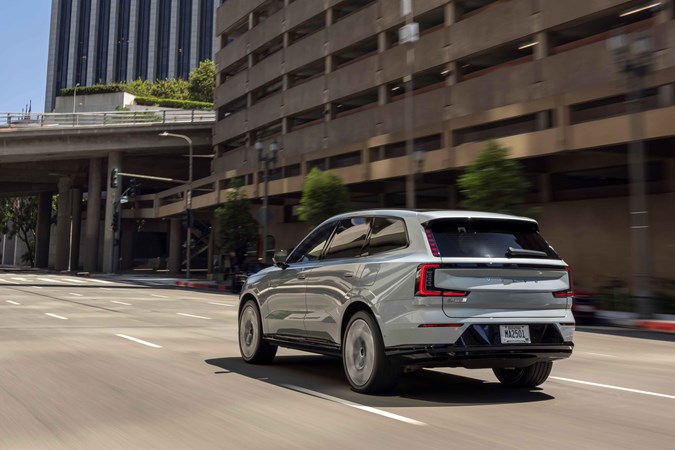
For now, the standard spec is as you’d expect for something at this price point: extensive. B&W’s excellent, 25-speaker sound system is standard, as is Google Maps-based nav, Apple CarPlay, front massage seats, power-folding rear seats and a Qualcomm-powered infotainment that’s meant to reduce latency.
Now click through to the next page to read our final verdict on the Volvo EX90.


